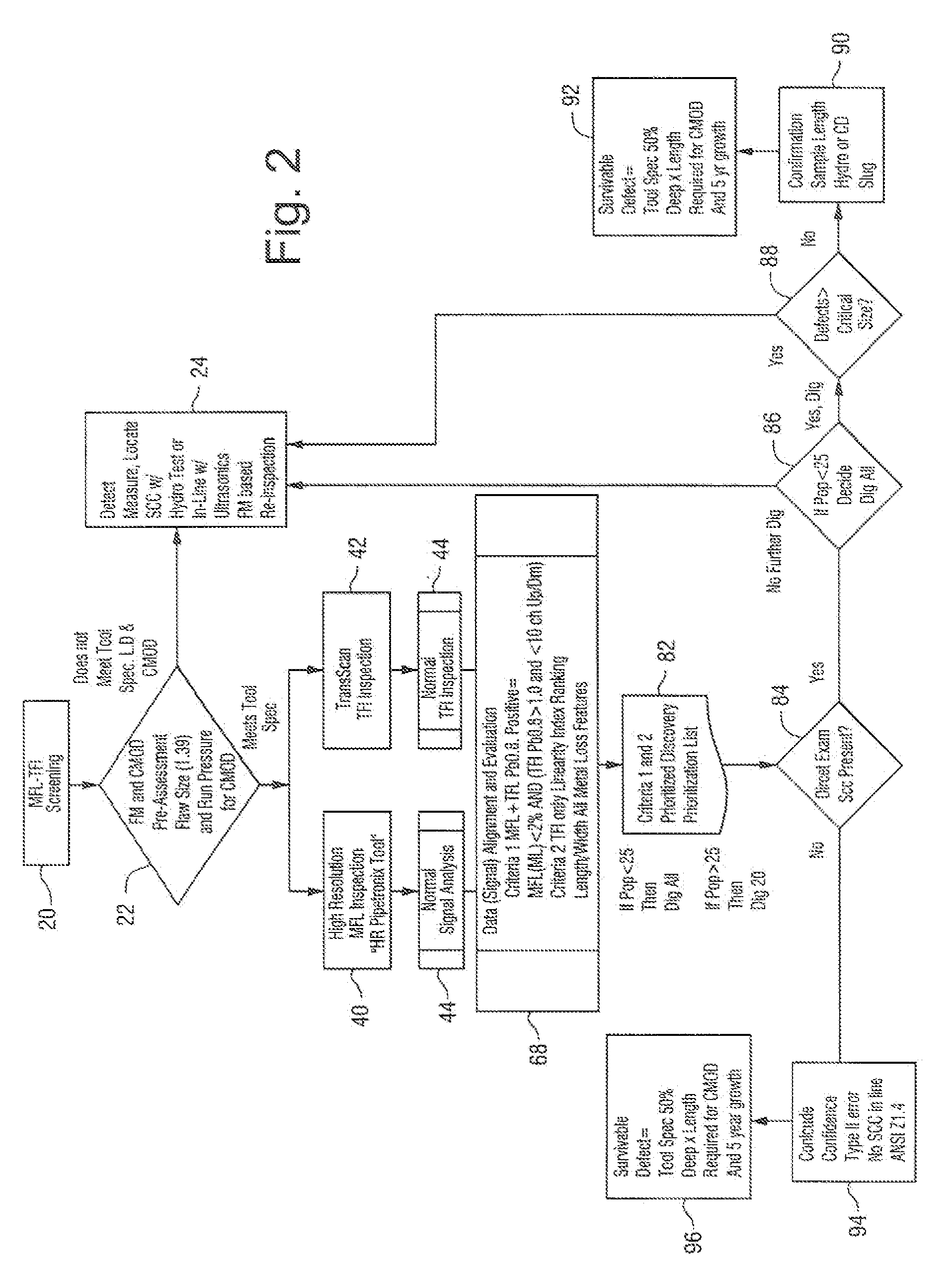Method and apparatus inspecting pipelines using magnetic flux sensors
a technology of magnetic flux and pipelines, applied in the field of inspection of pipelines, can solve the problems of no available technology to survey pipelines using sophisticated technologies, destroying oxide layers and further extending cracks, and reluctance to utilize sophisticated and costly inspection technologies on pipelines. achieve the effect of high degree of confiden
- Summary
- Abstract
- Description
- Claims
- Application Information
AI Technical Summary
Benefits of technology
Problems solved by technology
Method used
Image
Examples
Embodiment Construction
[0025]FIG. 1 shows schematically a system upon which the pipeline inspection and management system 10 may be implemented in the exemplary embodiments described herein. Pipelines may be liquid or gas pipelines. An underground pipeline 11 may have corrosion induced stress cracks 12 that are periodically inspected with a magnetic field probe 13. The probe is used to simultaneously acquire MFL and TFI magnetic flux signal data. Alternatively, a MFL sensor probe and a separate TFI sensor probe may be used and passed separately through the pipe to acquire serially MFL and TFI sensor data. The pipeline management system 10 may include a network of one or more user computers 14, e.g., personal or laptop computers, through which users at one or more geographic locations collect data and may contact a host computer system 15. The host computer system 15 executes computer instructions for managing pipeline data and the user systems 14 are coupled to the host system via a communications network...
PUM
| Property | Measurement | Unit |
|---|---|---|
| thickness | aaaaa | aaaaa |
| metal loss threshold | aaaaa | aaaaa |
| stress corrosion cracking | aaaaa | aaaaa |
Abstract
Description
Claims
Application Information
 Login to View More
Login to View More - R&D
- Intellectual Property
- Life Sciences
- Materials
- Tech Scout
- Unparalleled Data Quality
- Higher Quality Content
- 60% Fewer Hallucinations
Browse by: Latest US Patents, China's latest patents, Technical Efficacy Thesaurus, Application Domain, Technology Topic, Popular Technical Reports.
© 2025 PatSnap. All rights reserved.Legal|Privacy policy|Modern Slavery Act Transparency Statement|Sitemap|About US| Contact US: help@patsnap.com



